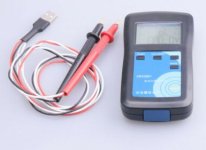Hello all,
I've recently purchased 50 x Molicel P42A batteries. I am getting ready to assemble them into a 16s3p pack for my eBike.
I have purchased them from a reliable source, and they have given me a certificate to show they are authorized distributors.
Before I assemble, what sort of tests do I have to do to make sure they are 100% functional and not fauly?
I will measure the voltage level to make sure they are all within 0.1V of each other.
Any other things to consider? IR test? Capacity test? etc.? I don't have access to much equipment, just a multimeter, and an oscilloscope.
I can do an internal resistance test by connecting it to a resistor. But I've also heard this isn't very accurate. Any advice?
I've recently purchased 50 x Molicel P42A batteries. I am getting ready to assemble them into a 16s3p pack for my eBike.
I have purchased them from a reliable source, and they have given me a certificate to show they are authorized distributors.
Before I assemble, what sort of tests do I have to do to make sure they are 100% functional and not fauly?
I will measure the voltage level to make sure they are all within 0.1V of each other.
Any other things to consider? IR test? Capacity test? etc.? I don't have access to much equipment, just a multimeter, and an oscilloscope.
I can do an internal resistance test by connecting it to a resistor. But I've also heard this isn't very accurate. Any advice?



